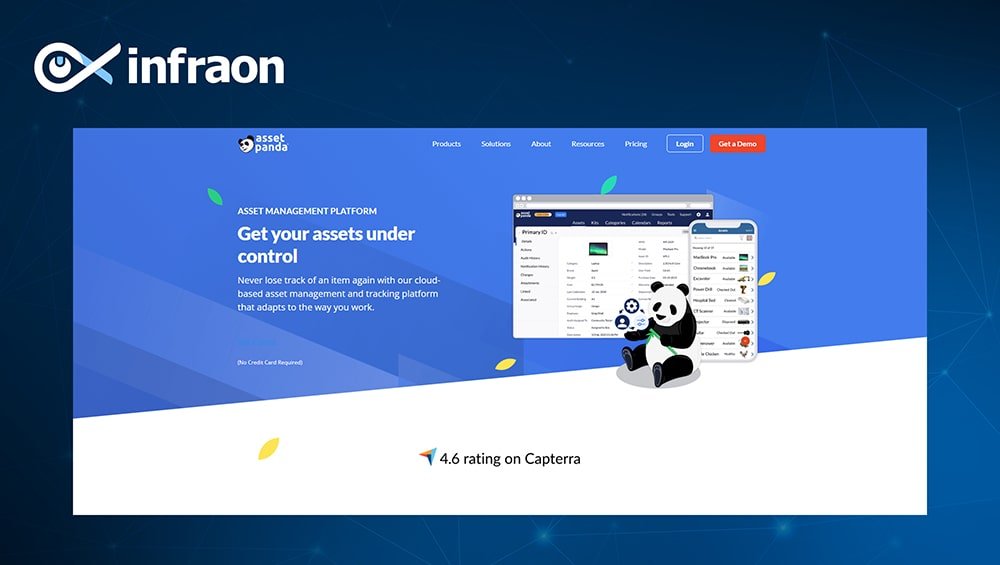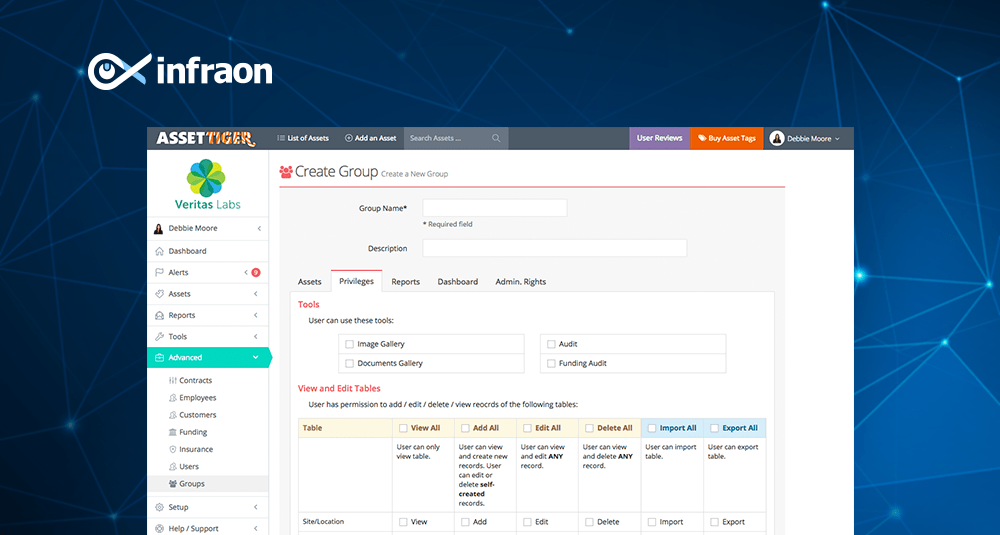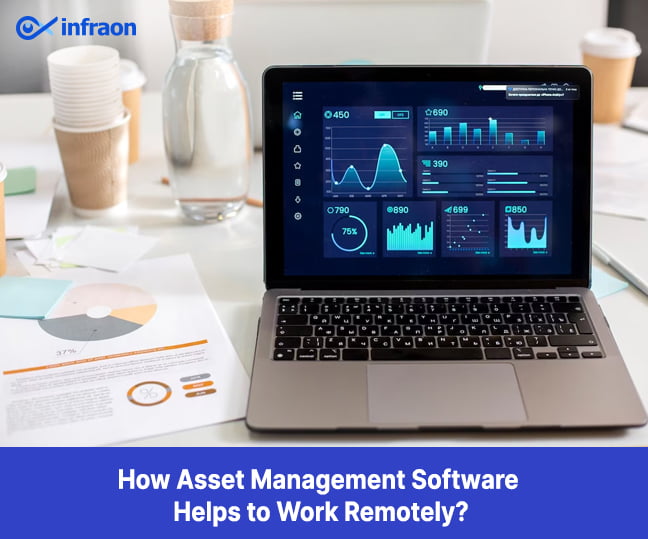Modern organizations are faced with the challenge of effectively managing their assets to ensure operational efficiency, cost optimization, and regulatory compliance. An effective asset management platform is the key to addressing these challenges and unlocking the full potential of an organization’s asset portfolio.
A powerful asset management platform plays a crucial role in the success and efficiency of organizations across various industries. It provides a centralized system for tracking, organizing, and maintaining assets throughout their lifecycle. It offers a wide range of features and functionalities that enable organizations to gain visibility, control, and insights into their asset inventory. From physical assets like equipment and machinery to digital assets such as software licenses and intellectual property, this platform covers the full spectrum of an organization’s valuable resources.
Related article: Atlassian vs. ServiceNow vs. Infraon – Choosing the Perfect IT Service Management Solution
Some of its advantages include:
Enhanced Asset Visibility and Control

An asset management platform provides a centralized repository for storing and organizing asset information. This allows organizations to gain a comprehensive view of their assets, including their location, status, maintenance history, and other relevant details. With improved visibility and control, organizations can optimize asset utilization, minimize downtime, and reduce the risk of lost or misplaced assets.
Streamlined Asset Tracking and Maintenance
An effective asset management platform automates and simplifies the process of tracking assets throughout their lifecycle. It enables organizations to efficiently track asset movements, schedule and monitor maintenance activities, and ensure compliance with maintenance requirements. This streamlines asset management processes, reduce manual effort, and improves overall operational efficiency.
Cost Optimization

With an asset management platform, organizations can optimize costs associated with asset procurement, maintenance, and retirement. By tracking assets’ usage, performance, and maintenance schedules, organizations can identify opportunities to reduce unnecessary asset purchases, avoid costly breakdowns, and plan for timely replacements or upgrades.
Improved Compliance and Risk Management
Compliance with regulatory standards and internal policies is crucial for organizations. An asset management platform helps organizations maintain compliance by tracking warranty periods, managing software licenses, and ensuring adherence to maintenance schedules. This mitigates the risk of non-compliance penalties, asset-related disruptions, and security vulnerabilities.
Data-Driven Decision Making
An asset management platform provides valuable data and analytics that enable organizations to make informed decisions. By analyzing asset performance, usage patterns, and lifecycle costs, organizations can optimize asset allocation, plan for future needs, and identify opportunities for process improvements.
Increased Productivity and Efficiency
A well-implemented asset management platform eliminates manual, time-consuming asset tracking processes, reducing administrative burden and freeing up resources. Employees can focus on more value-added tasks, resulting in increased productivity and improved operational efficiency.
3 proven asset management platforms for 2023
Hence, in a fast-paced business landscape, efficient asset management is crucial for organizations of all sizes. Asset tracking solutions have emerged as powerful tools to streamline asset management processes, increase productivity, and reduce costs. Among the plethora of options available, Asset Panda, Asset Tiger, and Infraon are popular choices. In this comprehensive comparison, we will delve into the features, functionalities, strengths, and limitations of these three platforms to help you make an informed decision regarding the ideal asset management solution for your organization.
Asset Panda

Asset Panda is a cloud-based asset tracking and management platform that offers a robust set of features designed to simplify asset tracking and enhance productivity. Key features of Asset Panda include:
Customizable Asset Database: Asset Panda provides a highly customizable asset database, allowing organizations to tailor asset attributes, fields, and categories to their specific needs. This flexibility ensures that the system aligns with unique asset management requirements.
Mobile App and Barcode Scanning: Asset Panda’s mobile app enables users to easily track and manage assets on the go. Barcode scanning capabilities allow for efficient asset identification, tracking, and maintenance.
Check-in/Check-out Functionality: Asset Panda facilitates efficient tracking of assets across various locations and users through its check-in/check-out functionality. This feature streamlines asset allocation and ensures accountability.
Workflow Automation: Asset Panda offers workflow automation features that enable organizations to automate repetitive asset management tasks, such as maintenance scheduling and alerts for expiring warranties. This automation enhances efficiency and reduces manual effort.
Asset Tiger

Asset Tiger is a cloud-based asset management solution known for its simplicity and ease of use. Asset Panda offers a broader range of features. Asset Tiger prioritizes ease of use and quick implementation, while Asset Panda emphasizes comprehensive functionality and customization options. Asset Tiger provides essential functionalities for effective asset tracking. Key features of Asset Tiger include:
Asset Database: Asset Tiger provides a central asset database for storing asset details, such as serial numbers, purchase dates, and locations. Users can organize assets into custom categories and groups for easy tracking and filtering.
Mobile App and QR Code Scanning: Asset Tiger’s mobile app allows users to scan QR codes to quickly identify and update asset information. This enables efficient asset tracking and simplifies the process of conducting physical audits.
Maintenance Tracking: Asset Tiger includes basic maintenance tracking features to schedule and track asset maintenance activities. Users can set reminders for maintenance tasks, ensuring assets are properly maintained and reducing downtime.
Infraon

Infraon is a comprehensive asset management suite tailored specifically for IT infrastructure assets. It offers a range of features and capabilities to streamline asset management processes within the IT domain. Key features of Infraon include:
IT Asset Discovery and Inventory: Infraon provides automated IT asset discovery and inventory management capabilities. It scans networks, identifies connected devices, and gathers relevant asset details, helping organizations maintain accurate and up-to-date asset inventories.
Asset Lifecycle Management: Infraon facilitates end-to-end management of IT assets throughout their lifecycle. From procurement to retirement, organizations can track asset movements, monitor warranties, schedule maintenance, and manage asset decommissioning efficiently.
Compliance and Security: Infraon emphasizes compliance and security aspects of IT asset management. It enables organizations to enforce software license compliance, monitor security vulnerabilities, and implement appropriate access controls to safeguard IT assets.
Integration with ITSM and CMDB: Infraon seamlessly integrates with IT service management (ITSM) and configuration management database (CMDB) systems, providing a comprehensive view of IT assets and their relationships within the broader IT infrastructure.
Comparison: Asset Panda vs. Asset Tiger vs. Infraon
When it comes to scalability, Asset Panda and Infraon have an advantage over Asset Tiger. Asset Panda offers robust scalability options, allowing organizations to handle large asset inventories and accommodate growth. Infraon, with its focus on IT infrastructure management, can scale to meet the needs of complex IT environments and accommodate the addition of new assets seamlessly.
In terms of integrations, Asset Panda and Infraon offer extensive integrations with other software systems. Asset Panda integrates with popular platforms such as Salesforce, QuickBooks, and Zendesk, enabling organizations to streamline asset management processes and data exchange. Infraon’s integration with ITSM and CMDB systems enhances the visibility and coordination between IT asset management and broader IT operations.

Customer support is another crucial aspect to consider. Asset Panda is known for its exceptional customer service, offering dedicated support and personalized assistance. Asset Tiger provides responsive customer support, while Infraon offers a range of support options, including online resources, documentation, and technical assistance.
Lastly, pricing models may vary across these solutions. Asset Panda and Asset Tiger typically offer subscription-based pricing plans with varying tiers based on features and the number of assets managed. Infraon, being a specialized IT infrastructure management solution, may involve a more customized pricing approach based on the specific requirements of the organization.
Related blog: Zendesk vs Atlassian vs Infraon in 2023
Disclaimer: This article is based on publicly available information from vendor websites, product documentation, and industry resources accessed as of [Month Year]. Product features, capabilities, pricing, and specifications are subject to change without notice. This comparison is intended for general informational purposes only and does not constitute professional advice, endorsement, or recommendation of any particular vendor or solution.We encourage readers to conduct independent research, request product demonstrations, and verify all information directly with vendors before making purchasing decisions. Infraon is one of the asset management solutions discussed in this comparison. For the most current information about any product mentioned, including Infraon, please visit the respective vendor’s official website or contact their sales team directly.While we strive for accuracy, we make no warranties or representations regarding the completeness, accuracy, or reliability of the information presented. Organizations should evaluate solutions based on their specific requirements and conduct thorough due diligence.
Conclusion
Ultimately, the choice among these asset management solutions will depend on the scale and complexity of your asset management requirements, industry-specific needs, and budget considerations. Evaluating these solutions based on their features, usability, scalability, integration capabilities, and customer support will help you identify the optimal asset management solution that aligns with your organization’s objectives and enhances operational efficiency.





















